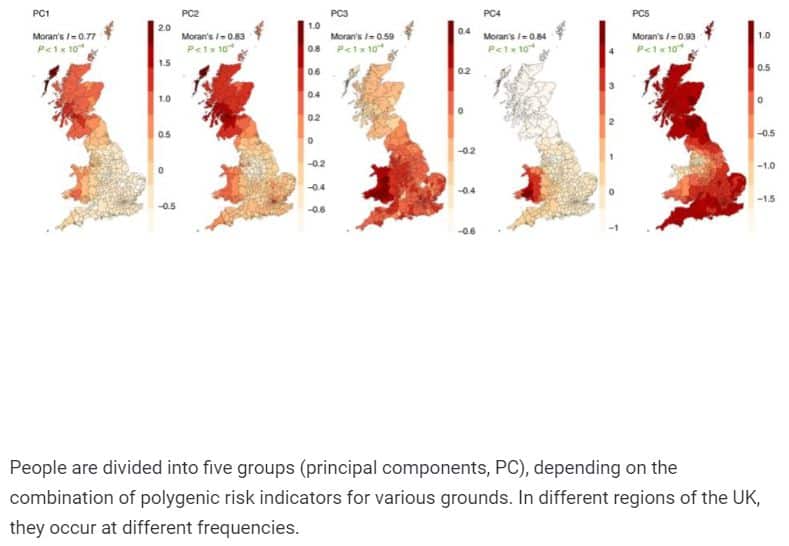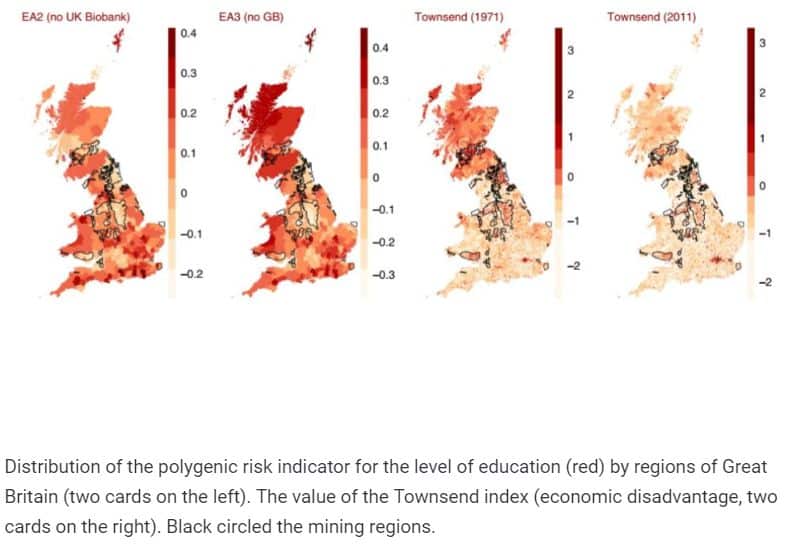A team of scientists have discovered traces of social stratification of the UK population at the genetic level. They found that people with similar sets of genes and a predisposition to certain diseases live in the same regions of the country, even if they are not relatives, and this depends on the economic well-being of the region.
Until now, it was believed that different gene variants were distributed in a population approximately randomly. This assumption is based on the recently popularized Mendelian randomization method. Its essence is as follows: if certain variants of genes are associated with a particular trait, we can assume that the trait in the population is distributed randomly. And then we can check whether it is true that people with this symptom are more likely to have this or that disease. And if so, then we can assume that we have established a causal relationship. Approximately, for example, a recent study was organized on how smoking is associated with the risk of developing depression and schizophrenia.
Abdel Abdellaoui from the University of Amsterdam and his colleagues discovered a pitfall in this method. They showed that genetic variants can be distributed in a population far from random. This could be influenced, for example, by the migration routes of people of various social groups between countries or even within the same country.
Scientists have taken advantage of UK Biobank’s genetic database data. From it, they selected about 455426 people from different regions of the UK. For each of them, a polygenic risk indicator was evaluated – this is a relative chance that a person will have one or another sign. To calculate it, scientists took a set of variants of genes that can be associated with this trait and summarized the values for each gene (is there a “necessary” option or not), multiplied by coefficients that reflect the significance (weight) of a particular gene.
Scientists calculated polygenic risk indicators for a number of signs: there were both physiological ones – for example, body mass index, addiction to diabetes or the risk of developing diabetes, and social factors – for example, level of education. At the same time, the researchers took information about which gene variants affect the traits from articles whose authors did not work with UK Biobank – to be sure that the set of these gene variants is not unique to the British.
Researchers have found that polygenic risk indicators for a variety of reasons are unevenly distributed across the UK. In other words, people in the north of the country are predisposed to other conditions and diseases than in the south or in Wells. But even when scientists included the genealogies of people in their model as one of the factors, this effect did not disappear. This means that people in different regions of the UK live with a similar level of risk of developing certain symptoms, even if they are not relatives.

This dependence was especially pronounced for the level of education. The authors of the work drew attention to the fact that the polygenic risk indicator for the level of education was the lowest (approximately -0.2 compared to 0.2 on average for the country) in the “mining” regions with a high index of economic distress. When the researchers checked how risk indicators for other signs are distributed across England, they found that they are very different among the inhabitants of these regions and the rest of the British. The greatest differences were in the risk indicators for people who left mining cities. For example, the polygenic risk score for body mass index was about 0.1 for people in a poor region, -0.5 for people in other areas of the country, and -0.1 for those who left a poor region for a rich one.
Scientists believe that in this way they managed to fix the stratification of society at the genetic level. The stronger a particular attribute was associated with the socio-economic situation, the higher the degree of clustering of risk indicators for this attribute. These are probably traces of industrialization: once the representatives of the poor walked into the mines and settled around them. Now poor migrants continue to arrive in these areas, and people who are interested in education and career, on the contrary, leave them.

The researchers of the study note that such a manifestation of social inequality can distort the results of statistical studies – it may turn out that genetic variants are not evenly distributed in the population. In this case, inequality in one way distorts data in another. For example, you can imagine that if people have a lower polygenic risk indicator for their level of education, then they will often live in poor regions, eat junk food and be obese.
